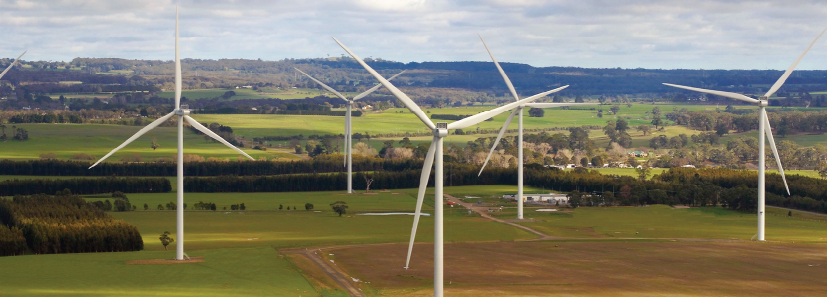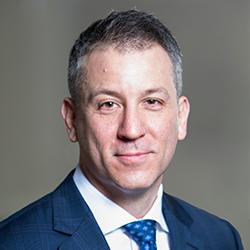
Northleaf's Jamie Storrow recently sat down with Infrastructure Investor to discuss the attractiveness of the mid-market.
How has North America’s market evolved in terms of size stratification?
What we have seen over the past few years is fund sizes increasing substantially, regardless of jurisdiction. Global funds. Regional funds. Across the board, average fund sizes are growing. In fact, a few funds have closed with more than $20 billion in commitments. That is creating an ever-widening gap between those large funds and funds in the mid-market – in the $1 billion to $2 billion range – where we typically operate, and therefore, a difference in the deals being done by those funds.
What makes that mid-market space an attractive investment proposition on a relative basis?
There continues to be a very high number of opportunities at the small and mid-sized level. The way that our economies are constructed means that there are many small power investments, small communications investments and small transportation investments available. But as you increase in scale, the number of large airports or large utilities that are available is going to be very restricted at any given time. That level of choice that we see in the mid-market leads to less competitive intensity, and that is one of the most attractive characteristics of the space.
There may be less competition than in the mega-market, but have you seen competitive dynamics change?
There are absolutely more managers coming to market. But when that is coupled with growing opportunity sets, the dynamics are still highly favourable. There are new greenfield investment opportunities. There are many opportunities to privatize or commercialize government assets. And then there are assets that need to be carved out of large corporations. There are plenty of deals to go around.
Where are you finding the most interesting opportunities right now?
The two main areas where we are seeing attractive investment opportunities of our target size are renewable power and communications infrastructure. We are active in wind, solar, geothermal and battery storage, and we are active from commencement of installation through to long-term ownership in our target countries which are the US, Canada, Australia and selectively in Western Europe.
From a communications infrastructure perspective, we primarily invest in small, fully contracted data centres and fibre investments, but we have also been reviewing select investments in towers. In many of the countries where we operate, and in particular, in the US, these markets remain highly fragmented and so there are numerous smaller, less identifiable investment opportunities that can then be scaled, either through installation activities or through acquisitions, to create more diversified and valuable assets.
Given that there are so many potential opportunities in the mid-market, what is your approach to origination and asset selection?
Since the inception of our program, we have completed a continual mapping exercise through which we identify suitable sub-asset classes in the countries that we target. We then look for industrial or developer relationships, specifically in areas that we view as less competitive – areas where it is more difficult to run auction processes. We begin meeting with groups at trade shows, through mutual contacts and through our network of nine operating partners that work with us covering specific subsectors, helping us source, diligence and manage investments. From there, we create a pipeline of investments.
The transactions we most commonly end up pursuing, meanwhile, involve undercapitalized industrial companies or involve us coming in as capital partners alongside developers. We work with the CEOs and CFOs of these industrials and developers to create off-market transactions. That, fundamentally, is how we approach origination.
How would you describe LP appetite for North American mid-market infrastructure?
There is no doubt that we are seeing increasing levels of LP interest in the mid-market. The vast majority of capital over recent years has gone into those very large funds. But now, after a period of digestion, investors are seeing advantages in diversifying into the mid-market, which gives them a very different set of exposures.
Importantly, at our investment size, which typically involves writing equity cheques of between $100 million and $200 million, investors gain exposure to a very different set of assets than would be the case in a $20 billion fund. Our investments tend to involve assets that do one thing.
As you move up the scale, you get more into ‘company investing’ - assets that cover multiple activities. At the smaller end of the market, the risk exposures are more straightforward. That is an important element that we try to convey to investors.
And what about value creation strategies? How do they differ in the mid-market?
We look to grow and/or de-risk all of our investments in a variety of ways. In the context of renewable power, that will often include the completion of installation at various locations. It may involve extending revenue agreements or operational agreements to create value. And it could include securing different types of financing – debt financing or tax equity financing, for example.
In other sectors, we may look at scaling through acquisition. A common value creation strategy in the data centre space, for example, involves identifying small, fully contracted data centres that are under the radar and aggregating them into larger pools. That type of activity creates scale, diversity and visibility, which is, in itself, a value creation strategy. So, our approach will vary depending on the industry, but we will always look to grow and/or de-risk every one of the companies we work with.
Are there any challenges that you would particularly associate with mid-market infrastructure investment?
One of the principal challenges of the mid-market is that we are typically working with smaller industrial companies and developers that will often not have the time or resources to create properly packaged information. That means we often end up co-creating transactions with them, and working alongside them to create that information, and that can take a very long time. It is not uncommon for us to spend up to one or two years on a particular deal.
In addition, smaller groups will often not be able to hire bankers or advisers to assist them. They often don’t have the bandwidth to work with multiple parties, so we have to be extremely patient. It is important to be collaborative, in that sense, because the counterparties we are working with may not have the same level of resources that one might expect to find at the larger end of the market.
What impact has COVID-19 had on your portfolio companies and on your ability to transact?
We quickly moved each of our investee businesses to a business continuity plan and all onsite workers received additional training. They have all been working under strict social distancing practices and their health is regularly monitored. Where we have office workers, they are highly encouraged to work from home and only the most essential workers have remained on-site. Because we have taken those steps, we have not had any operational shut-downs as a result of COVID-19. All of our portfolio companies have continued to operate since the pandemic began.
Having said that, there is no doubt that it has become more difficult to make new investments. We have been using our operating partner network to continue meeting with companies where possible and to perform some high-level due diligence activities. But traditional, in-person meetings are far more challenging, and we have seen a slowdown from that perspective. People are definitely starting to adapt, and we are able to get a long way through processes remotely. Getting across the finishing line is what is really hard. That is where we are seeing most challenges in the current environment – actually closing on transactions.
How important is the political backdrop to mid-market infrastructure investment?
It very much depends on the jurisdiction. The level of political influence on the infrastructure market varies significantly from country to country. Looking at this through a North American lens, the vast majority of infrastructure decisions in the US are taken at either a state or municipal level. The federal government has very little direct involvement. For that reason, the end result is a highly fragmented approach to both new and existing infrastructure. Canada works largely in the same way, which is very different to Europe, where infrastructure decisions are often taken more at a national level.
What do you believe the long-term future holds for the North American mid-market, beyond the immediacy of the COVID-19 crisis?
The whole infrastructure industry is still in its infancy. These are very much early days. Each year we see new and different needs for infrastructure. Each year the population rises and the existing infrastructure that, in a lot of western countries was built in the 1940s, 50s and 60s, continues to deteriorate. There is a constant demand for new infrastructure and a constant need for replenishment, which is creating a rich tapestry of investment opportunities, across the asset class, but specifically in the mid-market. I also believe that as institutional investors continue to grow in sophistication, they will increasingly look to diversify away from the mega-cap funds, creating a lot more demand for mid-market funds as well.

Jamie Storrow
Managing Director
Jamie is co-head of Northleaf's infrastructure investment program and a member of its investment committee. He is primarily responsible for transaction origination, due diligence and asset management of infrastructure investments.
